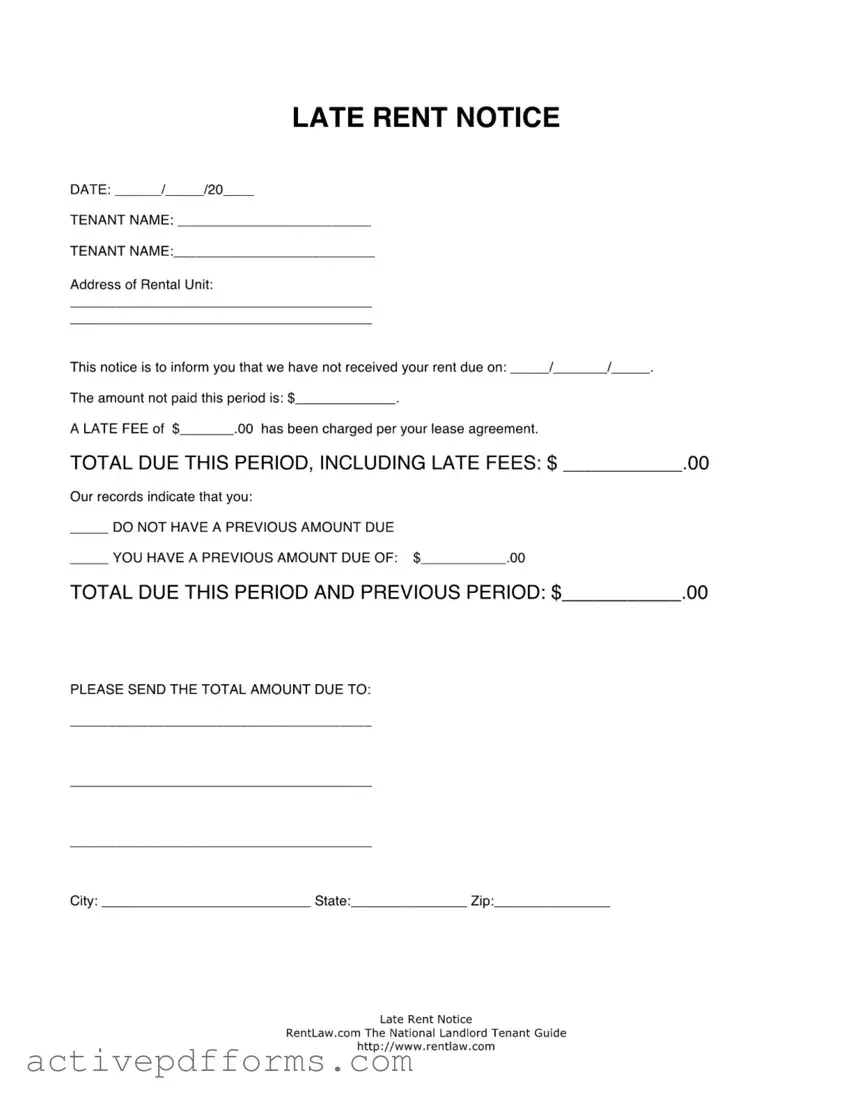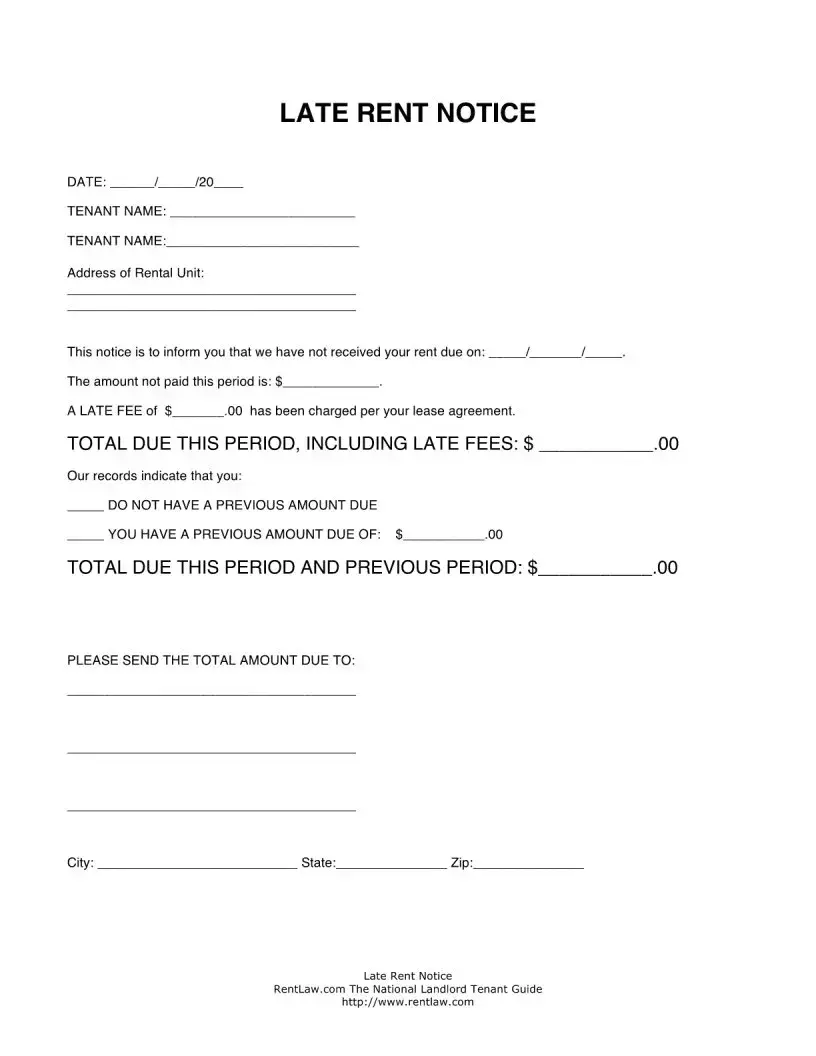Free Late Rent Letter PDF Template
A Late Rent Letter is a formal document from a landlord or property management to a tenant, indicating that rent payment has not been received by the due date. It outlines the amount overdue, including any late fees as per the lease agreement, and provides instructions on how and where to send the total amount due. The form is designed to serve as a reminder and records the instance of late payment, essential in maintaining formal rent collection and communication practices between landlords and tenants.
Edit Late Rent Letter Now

